Angelica Lorenzi on Getty PST, Working with Leica, and the Healing Power of ‘Post Nature’
Angelica Lorenzi is an Italian architectural designer and educator currently based in Los Angeles. She is currently design faculty at SCI-Arc, where she coordinates the DID summer program for local youth. Her research focuses on examining architecture's role and its impact on the built and unbuilt environment. Lorenzi’s interests lie in investigating multidisciplinary formal and material explorations and how they can be applied to rethink contemporary design, as well as questions of current architectural education and creativity. Her work has been exhibited in various international Exhibitions, including the TAB Tallin Architectural Biennale, Vienna Biennale, Venice Architecture Biennale, and Architekturtage Innsbruck, among others. Lorenzi holds a Bachelor of Architecture from the University of Innsbruck and received a Master of Architecture with distinction from Die Angewandte in Vienna.
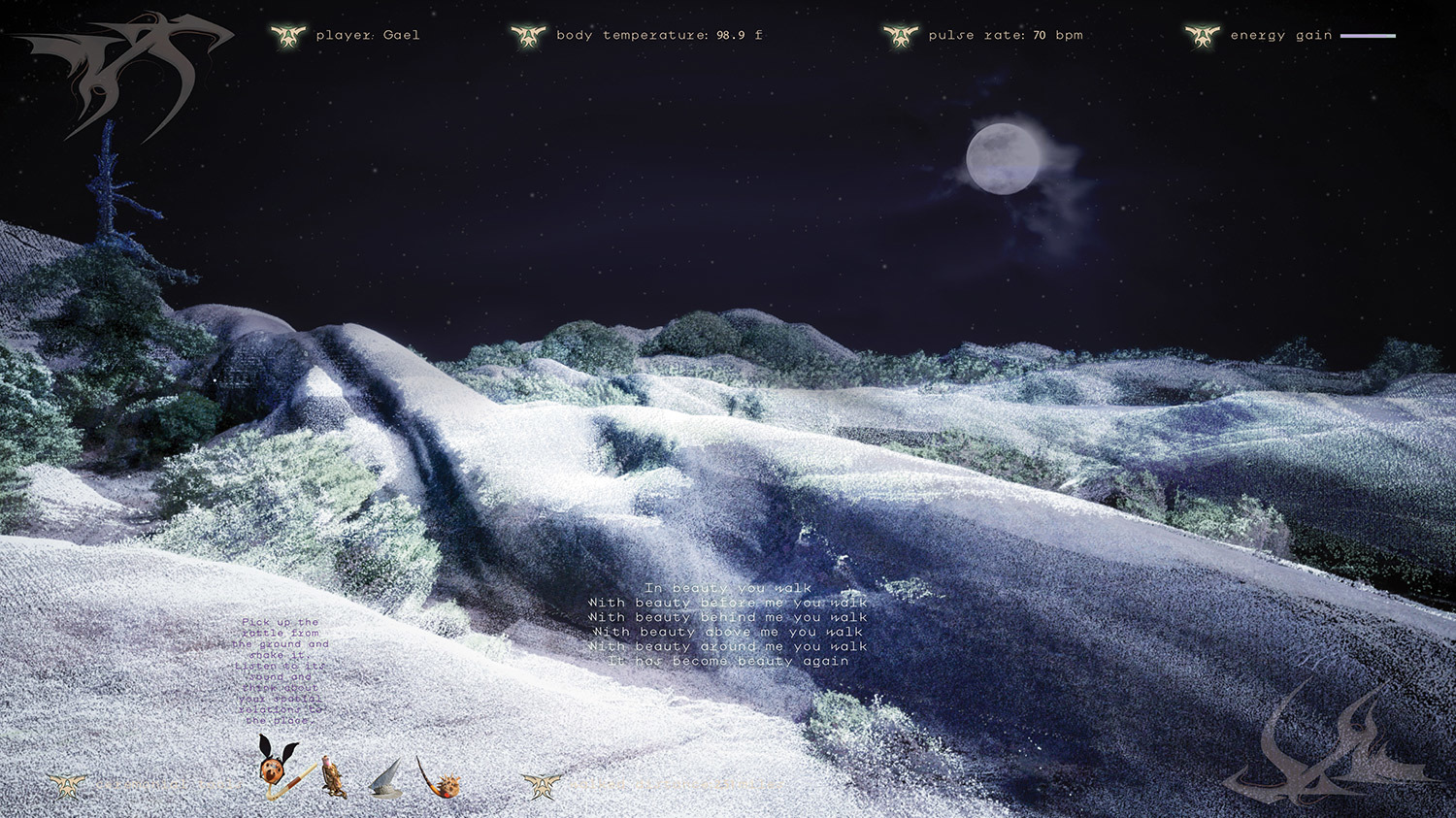
Most recently, Lorenzi has been participating in curatorial research, supported by the Getty Foundation, alongside fellow SCI-Arc faculty John Cooper, Damjan Jovanovic, M. Casey Rehm, and Jennifer Chen as part of the Getty Pacific Standard Time initiative based on Liam Young’s film concept Planet City, entitled Views of Planet City.
SCI-Arc’s Views of Planet City, now being planned as part of the Getty’s PST exhibition, which opens in 2024, encompasses a range of explorations that engage students and faculty with globally influential scholars, artists, scientists, and technologists, beginning with Liam Young’s framing conceptualization of Planet City through an architectural grand tour of large-scale infrastructures showing the first intimations of a planet city already in the making.

Ceremonial object created with DALL E- A rattle made from half of a dolphin's head and half of a deer's head, decorated with trochus pearled seashells and a beaded net.
We spoke to Angelica about the project she’s produced for Views of Planet City, “Post Nature,” as well as her collaboration with Leica with whom she partnered for this work.
Can you speak about how your original impetus for this project—EO Wilson’s Half Earth proposition—led to the development of your project for Views of Planet City?
E.O. Wilson's "Half Earth" idea is an important and radical one that should be discussed more frequently because as inhabitants of this earth it challenges us to face ourselves, questioning the behaviors we adopt toward the natural world and the living and nonliving creatures that are part of it. What's at stake is the possibility of reversing the fortunes of a disastrous future. Post Nature, my contribution to Views of Planet City project looks at this proposal as an opportunity to awaken human consciousness, while avoiding the existential decision to completely separate humans from nature.
E.O. Wilson uses the term rewilding, assuming that man, as a being in his own right, belongs to a category outside the natural environment. Muriel Combes points out in her essay “On Nature” that “In the perspectives of both Spinoza and Simondon, nature is in us at least as much as outside of us. And yet it is not outside of us, in the sense of something that is facing us”. We are a whole entity. If we follow this last principle, everything that is considered nature, so even the human being, can participate in a rewilding experience. And it is precisely through this process that we have a chance to rediscover our deepest essence as humans beyond our circumstantialities and singularities. By rediscovering the ethical meaning of belonging to the same system we are spurred to seek a universal language, understandable by all, that allows us to re-establish an authentic communication with the natural world. This approach can inspire new ecological models of landscape management, less invasive and more ethical than those proposed in the last 300 years since the Industrial Revolution.
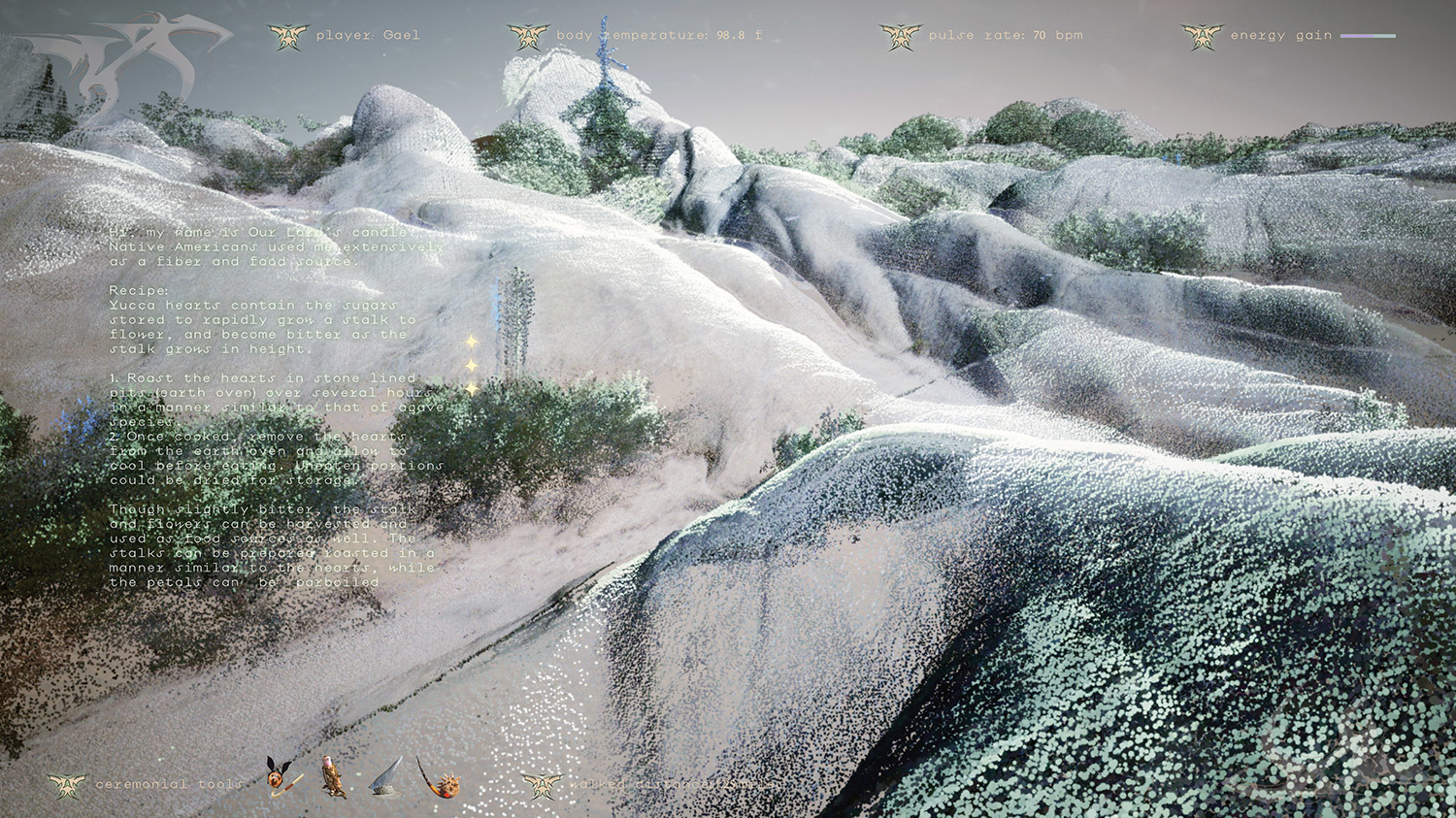
Can you describe the project you’re creating for the Getty PST exhibition?
The Post Nature project is intended to be experienced as an initiatory journey of 12 hours, a ritual that lasts "between two suns," capable of engaging all the senses and stimulating the viewer to evaluate their own connection with the natural environment. Nature here becomes the stage for a magical ceremony during which dormant and suppressed spiritual energies are reactivated.
The piece I'm working on for the exhibition features two elements: a digital simulation consisting of four sites scanned with Leica's BLK360 scanner and manipulated in Unreal Engine. The sites stretch along the West Coast, from California to Alaska, and were chosen for their sociopolitical and cultural potential or ecological dynamic.
Some are places that were, and still are, sacred to the Native American tribes; for example, Piedra Blanca, an elephantine rock garden formed by fossilized sand dunes; a monument to mysticism, held to be a spiritual refuge for the Chumash people, that still enchants anyone who ventures among its boulders that seem to be taken out of one of Yves Tanguy's paintings. Other sites are small patches of land that have had the incredible luck of not yet being heavily exploited. Santa Rosa Island, or *Wi'ma* as the Chumash call it, one of the most remote of the Channel Islands, which since 1994 has become part of a restoration project of endemic vegetation that almost disappeared because of livestock introduced by settlers during the 1800s. And again, the McCoin orchard and Monkey Face vineyard in the Crooked River National Grassland, Oregon, an ancient homestead orchard, unique both in size and in the fact that it has remained intact over the years, making it immune to the wine production system of more modern times.
The other part that makes up the exhibit piece is a sculptural topography composed of living growing materials, including soil, rocks, and wild plants. Earth mixed with hay and spices that stimulates the sense of smell and at the same time the viewer can feel the moisture, temperature, and texture of this material. At the viewer's disposal will be a series of ceremonial objects designed using AI and made from recyclable organic and synthetic materials. These objects suggest ritual uses and serve as a threshold for the viewer to enter into communication with the digital simulation of nature. The objects are equipped with motion and pulse rate sensors and connect to Unreal Engine via Arduino, allowing the audience to feed and alter the simulation with their physical and emotional state. Viewers will be invited to "walk" through the digital simulation and use the props provided to unlock levels of the video game.
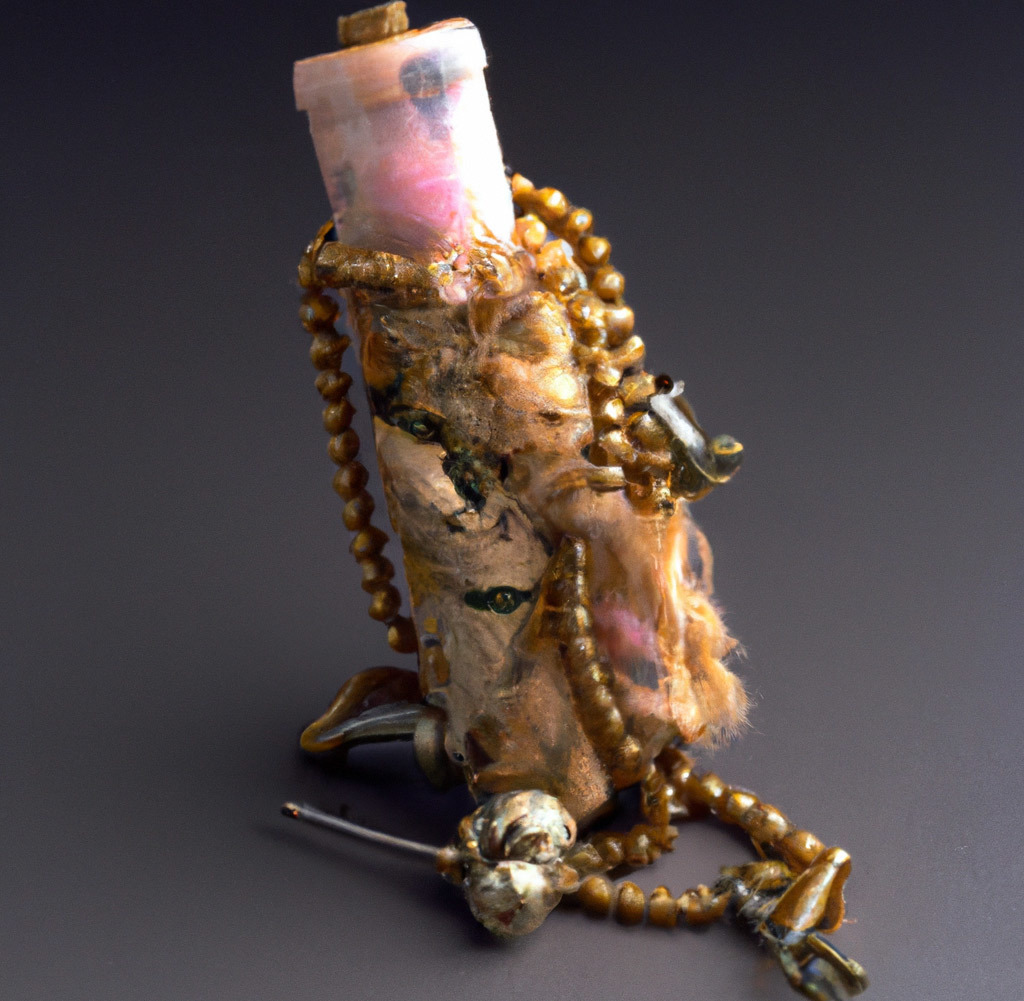
Ceremonial object created with DALL E - An electronic cigarette made from tiger cowrie shells and desert camouflage parachute cord, bedazzled with precious stones, digital art.
Can you discuss the collaboration that you’re doing with Leica for this project, and how students have been participating?
The Leica scanner proved to be a powerful tool for exploring a research methodology based on the documentation and representation of landscapes through 3D scanning technologies. This tool also gave me the opportunity to speculate further on the future conditions for these territories. The collaboration with Leica was key to the development of this project. Given the morphological qualities of the landscapes, where vegetation is dense and hardly accessible, and the presence of man-made interventions is minimal, we would not have been able to achieve such high-quality scans without the BLK360 scanner. During the past two years, the RA Zane Mechem, Timothy Choi, and I focused on developing an optimized workflow in preparation for the Getty PST exhibition; we experimented with different scanner settings, tried working with smaller or bigger data sets to see the different results, we have also tried working through different scales. During this time, we have been lucky to be assisted by BLK Technical Specialist, Andy Fontana, who helped us pushing the limits of the scanner's capabilities.
How has your understanding of the power of imaginary worlds grown throughout the process?
I believe there are as many worlds as there are reality’s dimensions all around us. Views of Planet City reinforces this thought, where there is not just one way of seeing and perceiving the reality we live in, but multiple ones. One can also relate to the power of images, as a device of the imagination, which is key to understanding a reality different from that of the everyday. In contemporary society we often make use of language tools to understand, quantify and qualify events, actions, and conditions of reality, and we rely on machines, often necessary, for the codification of the scientific world. It must be recognized, however, that there is another approach, less known to masses, especially in the Western world, that serves to study and understand the phenomena of existence. For example, indigenous sciences that use a language—that of myth, which comes before the logos, the written word—that passes on cultural and traditional environmental knowledge particular to a group of people and their place of origin. Traditions that often speak of a relationship of mutual respect between humans, plants, and animals. One should not make the mistake of thinking of this kind of relationship as something exotic; cultures around the world have brought back examples of it. In working on the Post Nature project, I began to think about how to bring the viewer into an experience that brings together the world of rationalist culture along with that of a magical culture, and how it can arise from the forces of a simulated level of reality.
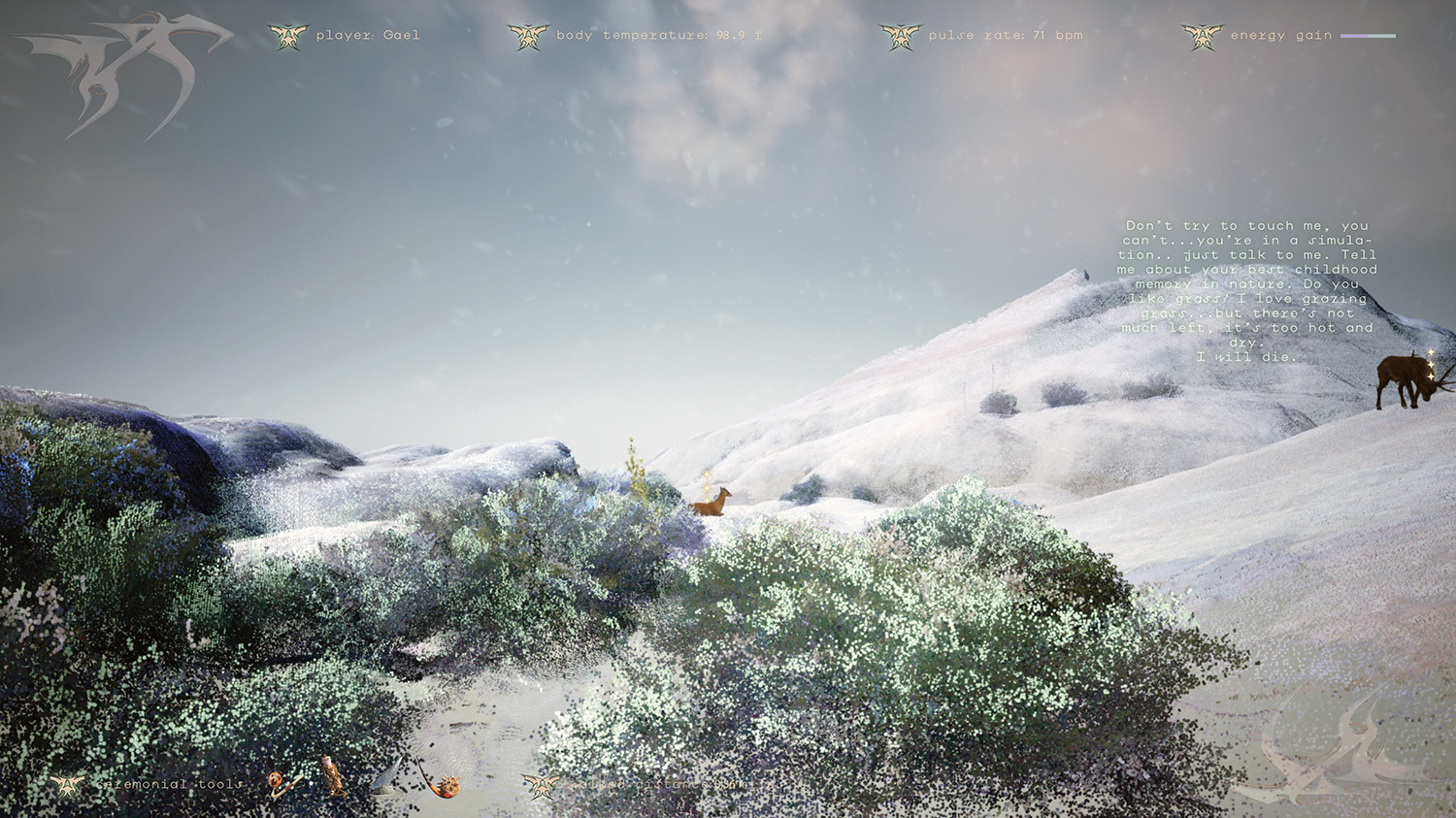
You’ll also be working with four other fellow SCI-Arc faculty (Damjan Jovanovic, John Cooper, Liam Young, and Jennifer Chen). Can you tell us anything about how those projects will be taking shape?
Views of Planet City is a project whose wide-ranging speculative nature leads to the need to establish a collaboration between expertise from various fields. Working with the faculty team proved to be an excellent opportunity to develop a harmonious dialogue between art and science, which are then the main themes Getty PST outlined for this project. During the research period we met regularly with the team, and it was exciting to compare our approach to the topic. Now that we're approaching the exhibition period, I'm looking forward to seeing how the projects, which work on different scales and with distinct aesthetics, will occupy the same space; I think it's a great opportunity to find out even more what the points of encounter are, but also the points of divergence. I think it's going to be terrific!
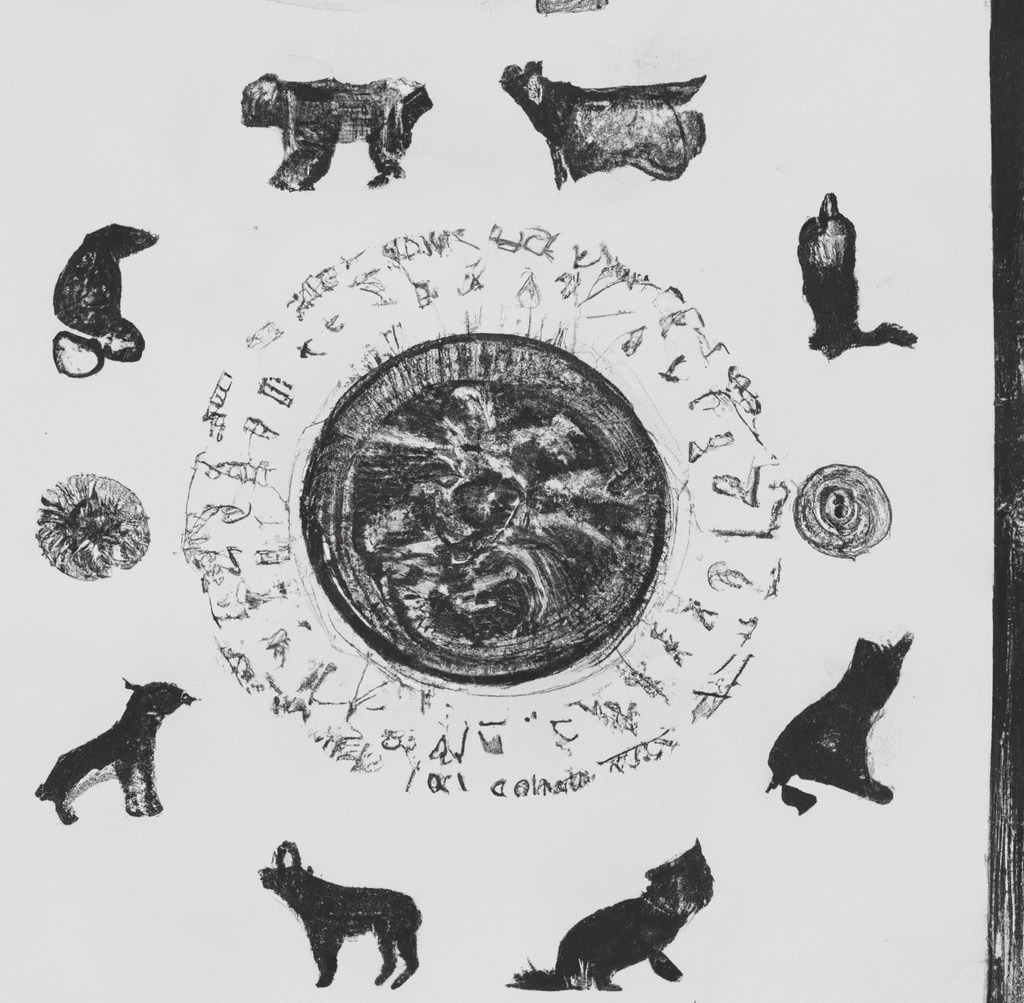
Ceremonial object created with DALL E- Ceremonial calendar with animals, ukiyo-e.
How do you see the shifting landscape of your work within the context of the ever-changing, ever-worsening global climate crisis?
During the lockdown in 2020 we saw that it doesn't take long for nature to heal. The water in Venice's canals was clear, dolphins in Cagliari had returned to swimming in the harbor, the air quality in many metropolitan cities had never been better. These are a few examples of how simple changes in habits we consider "normal" today can have a great impact on the "rewilding" of the Earth. One of the most striking examples remains for me that of Chernobyl, which I have long studied being the subject of my master's thesis. The Chernobyl Exclusion Zone and surrounding areas were among the most radioactive on Earth, but after a couple of years they became a refuge for wildlife, and now, after 30 years, those same areas are being considered to become a UNESCO Biosphere Reserve and Wilderness Area. If humans ease the pressure on nature, as we have seen happen in 2020, nature will recover. There is tremendous resilience in nature, which gives a lot of hope. I'd like to think that we can be as resilient as nature is, and that we can convince ourselves to change our behaviors. I hope that the viewer who experiences this initiatory journey of Post Nature will understand that change is not just a matter of sacrifice, but rather a fantastic opportunity to find ourselves and improve the quality of life.
Is there anything else you can share about Views of Planet City, the Getty PST exhibition, or upcoming projects?
The Post Nature project will not just produce a multisensory installation but will expand by becoming part of the curriculum of DID, the summer school program for high school students that I coordinate here at SCI-Arc. I am also working on publishing a vocabulary that collects terms that describe the synthetic natural world we live in today. I am also working on curating a panel discussion with a group of fantastic women on the topic of technique and magic applied to the natural world.